The Evil In The World Comes Almost Always From Ignorance, And Goodwill Can Cause As Much Damage As Ill-will
The evil in the world comes almost always from ignorance, and goodwill can cause as much damage as ill-will if it is not enlightened. People are more often good than bad, though in fact that is not the question. But they are more or less ignorant and this is what one calls vice or virtue, the most appalling vice being the ignorance that thinks it knows everything and which consequently authorizes itself to kill. The murderer’s soul is blind, and there is no true goodness or fine love without the greatest possible degree of clear-sightedness.
The Plague / Albert Camus
More Posts from Monstrous-mind and Others
🍂🍁🍂🎃🌎









Beautiful ginkgo trees at historic Sungkyunkwan University.
👏🍁🍂🌄🎃


🍂🍁🍃








竹の寺 地蔵院 🍁紅葉2021🍁
Jizo-in temple
🔭🌃🌌
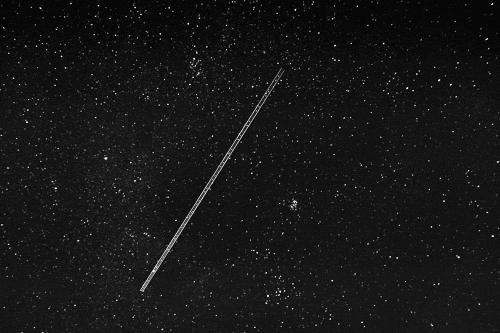
🔭🌌☄️🪐

2024 September 8
M31: The Andromeda Galaxy Image Credit: Subaru (NAOJ), Hubble (NASA/ESA), Mayall (NSF); Processing & Copyright: R. Gendler & R. Croman
Explanation: The most distant object easily visible to the unaided eye is M31, the great Andromeda Galaxy. Even at some two and a half million light-years distant, this immense spiral galaxy – spanning over 200,000 light years – is visible, although as a faint, nebulous cloud in the constellation Andromeda. A bright yellow nucleus, dark winding dust lanes, and expansive spiral arms dotted with blue star clusters and red nebulae, are recorded in this stunning telescopic image which combines data from orbiting Hubble with ground-based images from Subaru and Mayall. In only about 5 billion years, the Andromeda galaxy may be even easier to see – as it will likely span the entire night sky – just before it merges with, or passes right by, our Milky Way Galaxy.
∞ Source: apod.nasa.gov/apod/ap240908.html
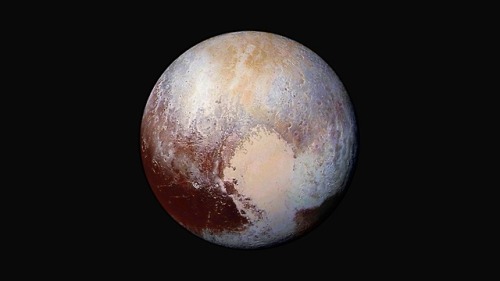

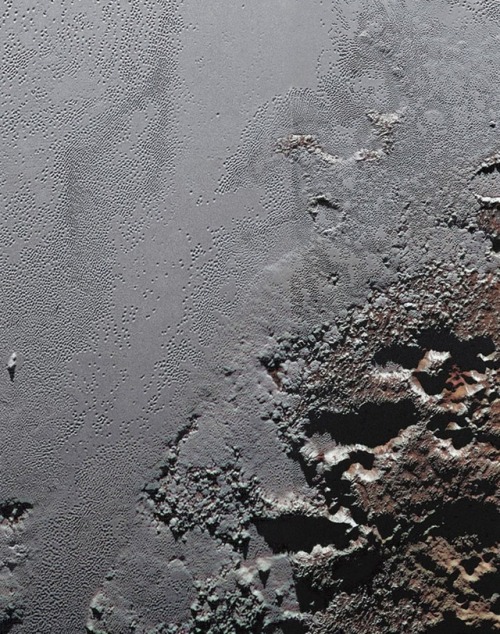
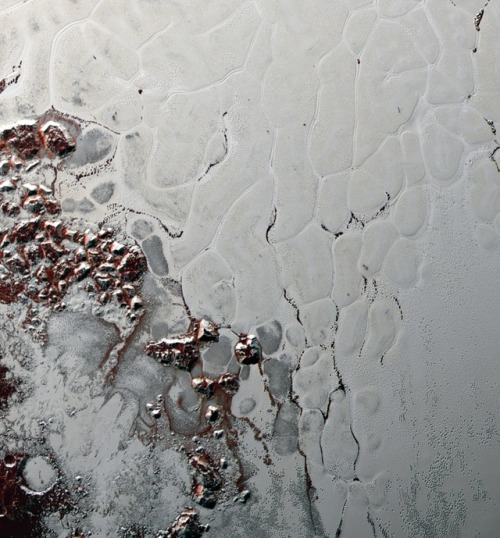
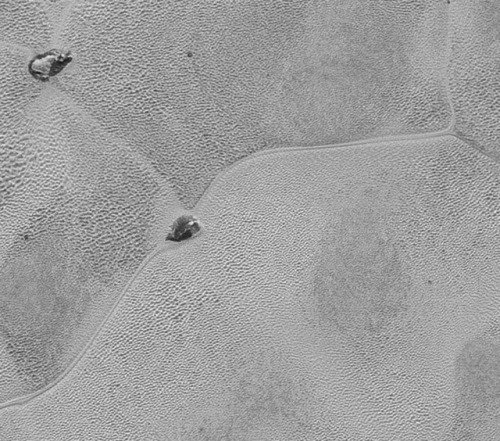
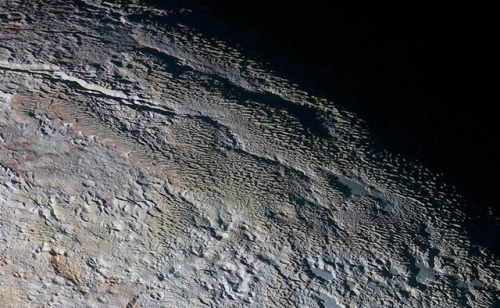
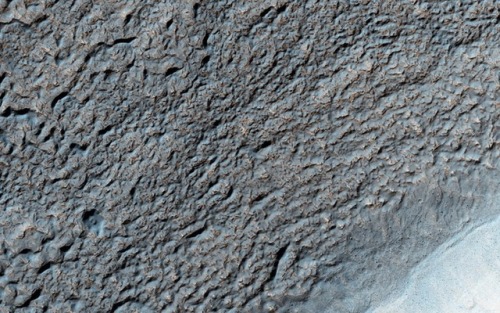
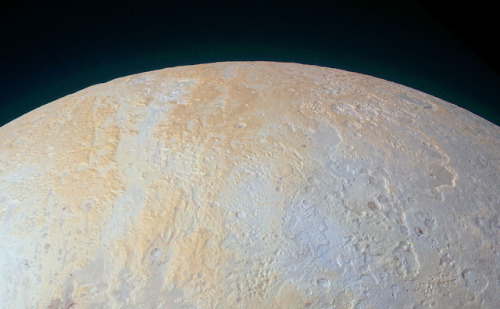
High-resolution images of Pluto taken by NASA’s New Horizons spacecraft.
The plains on Pluto’s surface are composed of more than 98 percent nitrogen ice, with traces of methane and carbon monoxide. Nitrogen and carbon monoxide are most abundant on the anti-Charon face of Pluto (around 180° longitude, where Tombaugh Regio’s western lobe, Sputnik Planitia, is located), whereas methane is most abundant near 300° east. The mountains are made of water ice. Pluto’s surface is quite varied, with large differences in both brightness and color. Pluto is one of the most contrastive bodies in the Solar System, with as much contrast as Saturn’s moon Iapetus. The color varies from charcoal black, to dark orange and white. Pluto’s color is more similar to that of Io with slightly more orange and significantly less red than Mars. Notable geographical features include Tombaugh Regio, or the “Heart” (a large bright area on the side opposite Charon), Cthulhu Macula, or the “Whale” (a large dark area on the trailing hemisphere), and the “Brass Knuckles” (a series of equatorial dark areas on the leading hemisphere). Sputnik Planitia, the western lobe of the “Heart”, is a 1,000 km-wide basin of frozen nitrogen and carbon monoxide ices, divided into polygonal cells, which are interpreted as convection cells that carry floating blocks of water ice crust and sublimation pits towards their margins; there are obvious signs of glacial flows both into and out of the basin. It has no craters that were visible to New Horizons, indicating that its surface is less than 10 million years old.
source | images: NASA/JPL
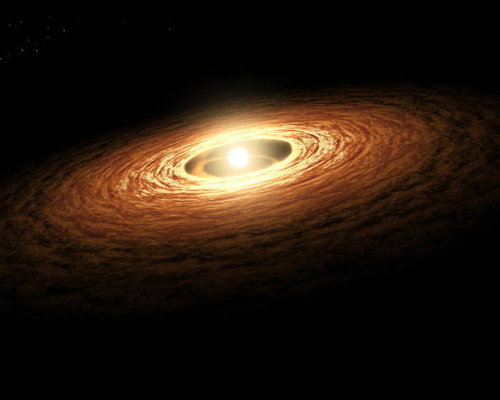
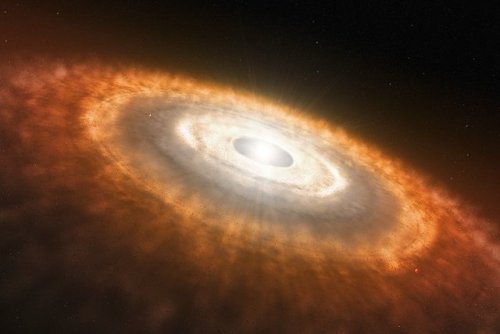
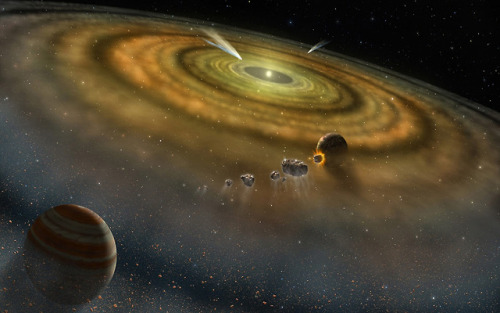
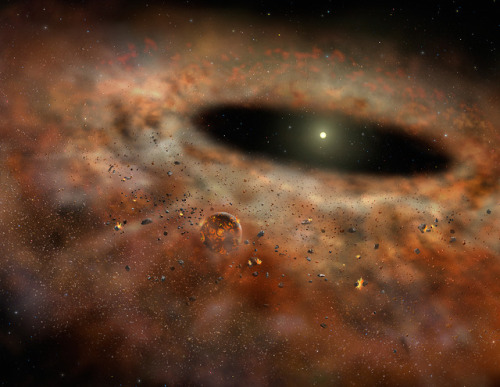
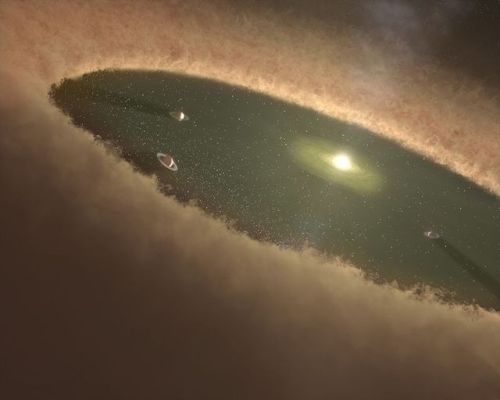
A protoplanetary disk is a rotating circumstellar disk of dense gas and dust surrounding a young newly formed star, a T Tauri star, or Herbig Ae/Be star. The protoplanetary disk may also be considered an accretion disk for the star itself, because gases or other material may be falling from the inner edge of the disk onto the surface of the star. This process should not be confused with the accretion process thought to build up the planets themselves. Externally illuminated photo-evaporating protoplanetary disks are called proplyds.
The nebular hypothesis of solar system formation describes how protoplanetary disks are thought to evolve into planetary systems. Electrostatic and gravitational interactions may cause the dust and ice grains in the disk to accrete into planetesimals. This process competes against the stellar wind, which drives the gas out of the system, and gravity (accretion), which pulls material into the central T Tauri star.
source
Image credit: NASA/JPL, ESO




Der Baum im Herbstlicht & Das Leuchten des Waldes by Oliver Henze
-
 darkstarbaby liked this · 9 months ago
darkstarbaby liked this · 9 months ago -
 purpupleghost liked this · 2 years ago
purpupleghost liked this · 2 years ago -
 jt-stavlios liked this · 3 years ago
jt-stavlios liked this · 3 years ago -
 hufflefluufff liked this · 3 years ago
hufflefluufff liked this · 3 years ago -
 unadulteratedsquirrel liked this · 3 years ago
unadulteratedsquirrel liked this · 3 years ago -
 vic-tori-w liked this · 4 years ago
vic-tori-w liked this · 4 years ago -
 pearlsnsatin liked this · 4 years ago
pearlsnsatin liked this · 4 years ago -
 gothambirdz liked this · 4 years ago
gothambirdz liked this · 4 years ago -
 loui3loui3 liked this · 4 years ago
loui3loui3 liked this · 4 years ago -
 starxidismoos liked this · 4 years ago
starxidismoos liked this · 4 years ago -
 pleaseshutup666 liked this · 4 years ago
pleaseshutup666 liked this · 4 years ago -
 rhaenicentric liked this · 4 years ago
rhaenicentric liked this · 4 years ago -
 my-blizzard-of-ice liked this · 4 years ago
my-blizzard-of-ice liked this · 4 years ago -
 stares-at-nothing liked this · 4 years ago
stares-at-nothing liked this · 4 years ago -
 donkeyteeth93 liked this · 4 years ago
donkeyteeth93 liked this · 4 years ago -
 bey0ndthewallofsleep reblogged this · 4 years ago
bey0ndthewallofsleep reblogged this · 4 years ago -
 bey0ndthewallofsleep liked this · 4 years ago
bey0ndthewallofsleep liked this · 4 years ago -
 angnawawalangbata liked this · 5 years ago
angnawawalangbata liked this · 5 years ago -
 flowerzbloozworld liked this · 5 years ago
flowerzbloozworld liked this · 5 years ago -
 palatinewolfsblog liked this · 5 years ago
palatinewolfsblog liked this · 5 years ago -
 the-many-facets-of-folly reblogged this · 5 years ago
the-many-facets-of-folly reblogged this · 5 years ago -
 hija-del-universo reblogged this · 5 years ago
hija-del-universo reblogged this · 5 years ago -
 hija-del-universo liked this · 5 years ago
hija-del-universo liked this · 5 years ago -
 gravelychill reblogged this · 5 years ago
gravelychill reblogged this · 5 years ago -
 alyssam0r reblogged this · 5 years ago
alyssam0r reblogged this · 5 years ago -
 1clearmirror liked this · 5 years ago
1clearmirror liked this · 5 years ago -
 delusionalthomas92 liked this · 5 years ago
delusionalthomas92 liked this · 5 years ago -
 inspadefuls liked this · 5 years ago
inspadefuls liked this · 5 years ago -
 farawayleaf liked this · 5 years ago
farawayleaf liked this · 5 years ago -
 ljubichica liked this · 5 years ago
ljubichica liked this · 5 years ago -
 tao-armada reblogged this · 5 years ago
tao-armada reblogged this · 5 years ago -
 bloomingtv liked this · 5 years ago
bloomingtv liked this · 5 years ago -
 nekaaaaa liked this · 5 years ago
nekaaaaa liked this · 5 years ago -
 ontologicalfailure-blog liked this · 5 years ago
ontologicalfailure-blog liked this · 5 years ago
My ambition is handicapped by laziness. -C. Bukowski Me gustan las personas desesperadas con mentes rotas y destinos rotos. Están llenos de sorpresas y explosiones. -C. Bukowski. I love cats. Born in the early 80's, raised in the 90's. I like Nature, Autumn, books, landscapes, cold days, cloudy Windy days, space, Science, Paleontology, Biology, Astronomy, History, Social Sciences, Drawing, spending the night watching at the stars, Rick & Morty. I'm a lazy ass.
222 posts